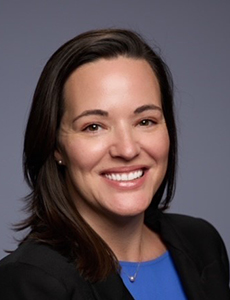Is A&H Coverage Worth the Spend for Higher Ed? The Answer Is a Resounding ‘Yes’ and Here’s Why

Higher education institutions are a unique model. Not only do they mold the minds of our future, but they are also running a business that includes staff, professors, special events, student athletics, housing, dining and more.
There’s a lot to consider in the risk management department.
“They’re learning institutions, but they’re also communities,” noted Matthew Drakeley, vice president, specialty markets, accident & health, QBE North America.
“They’re communities of students, communities of employees and their dependents. Colleges are interested in the wellbeing of their students and the wellbeing and health of their employee population.”
One solution shines through when it comes to addressing wellbeing for the college or university business model: accident and health insurance.
But what exactly does an A&H policy do? What makes it a standout product that higher education risk managers should be searching for?
“A&H is considered a niche area that’s very difficult to navigate, and schools rely very heavily on their insurance broker for that reason,” explained Michael Flood, vice president of underwriting, Accident & Health, Philadelphia Insurance Companies.
“There are three different target lines of business when we talk about accident and health for universities. The first is domestic and international student health insurance, the second is intercollegiate sports accident insurance and the third can be referred to as study abroad accident and sickness insurance or student/teacher travel overseas.”
With such a broad range and such a unique business model, universities and colleges should review what exactly an A&H policy can do before rushing in for this bespoke product.
The Far Reach of A&H
“Universities have complex risks,” said James Walloga, senior vice president, accident and health North America, for Allied World.
Colleges and universities are turning to A&H policies primarily for intercollegiate and intramural sports, travel in connection with those activities and any kind of student health program for students that do not have coverage under their parents’ plans.
For employees, A&H policies are doing much of the same — providing coverage specific to health and wellbeing, as well as to travel related to university activities.
“For students traveling internationally, there are insurance offerings for short-term out-of-country medical, travel assistance and security services. The faculty has many of the same coverage needs as the student population,” Walloga said.
And that’s just covering the basics. Each college or university has its own level of study abroad population, as well as its own sport involvement levels, so it’s important that they truly tailor their coverage to their needs.
“A&H can be a recruitment tool for grad schools, law schools, graduate assistants. Schools subsidize, oftentimes, the health insurance, and it’s all part of their recruitment package. So, it is used for recruitment and retention of students,” said Martha Murphy, senior vice president, Gallagher Student Health.
Murphy noted that A&H further provides international students with health care options that make them compliant with their visa requirements.
“International students have to have a certain level of insurance to comply with their J-1 visa. So international students are always covered,” she said.
Another trend that’s starting to emerge around A&H is transgender and gender dysphoria coverage. As more students enter college and start on a path of self-discovery, schools are looking at ways to assist and accommodate them on their journey.
“Schools are supporting the services needed to support a student that wants to and qualifies for transitioning,” Murphy explained.
Behavioral Health Trending
One area that’s starting to spark A&H interest for collegiate institutions is creating access to mental health and wellbeing services.
“Behavioral health has certainly become a primary focus,” said Murphy.
“Behavioral health support resources have been trending. All these health insurance plans that we place are Affordable Care Act certified, with full benefits around mental health,” she continued. “Universities are ensuring [through A&H] that students have access to behavioral health providers, medical providers.”
A recent study from Risk Strategies, the Student Health Plan Benchmarking Survey, found that 89% of colleges and universities that responded are prioritizing mental health coverage for students.
The 2023 study, as compared to 2022, saw mental health and wellbeing tie as the top concern for institutions, next to managing student health plan costs.
“One aspect of benefits that continues to see increased attention is mental health, and A&H really applies to all three categories: the student health, the intercollegiate sports and the study abroad,” Flood said.
“When we talk about study abroad, it can be a real jolt for a student when they go overseas. They can get homesick, they’re in a different environment, and mental health issues can arise, and they need to be treated immediately in many cases.”
As for mental health services on the main campus, universities and colleges often run into hurdles when it comes to identifying providers in-network and out-of-network.
“It’s a serious problem for the student community when it comes to mental health, and what is making it so difficult is the number of medical providers who are available to treat students on campus and whether those medical providers are willing to work in-network or not, because if they’re out-of-network, the fees they charge can be exorbitant for a student to afford,” Flood continued.
Also of interest in the Risk Strategies survey is that student health plan enrollment is trending up, resulting in an average enrollment increase from 22% to 24%. It’s just one more reason for institutions to seek out the benefits an A&H policy can provide.
What Risk Managers Can Review
All that said, there still seems to be some hesitation around A&H.
“A&H may not always be top of mind,” Walloga said.
“It has historically been a discretionary purchase, so in many respects, it has not been as prominent as other insurance programs.”
But that’s changing, he added. “For example, a growing list of countries require, or strongly recommend, travel medical insurance when [a student or staff member is] visiting.”
Because it is changing, risk managers within the university or college setting should be connecting with their broker or other insurance partners to really understand the product and services available to them.
“We’ve certainly seen carriers come in and out [of the market],” Drakeley said. “Universities are better served by being with a carrier that has a long-term and stable presence in the marketplace.”
A review of the carrier’s claims expertise is also prudent when it comes to A&H.
“Whether the carrier is handling the claims in house or contracting out with a TPA, the institution will want to make sure that they have experts who provide excellent claims service and understand the market dynamics of higher education and the cycles that exist in that business,” Drakeley said.
And to really vet carriers, it’s always wise to turn to your broker.
“Insurance is one piece of it, but really, any challenge the university is facing that has to do with wellness or is health related, we jump in and help,” Murphy said. “Broker advocates help facilitate, while the insurer provides coverage.” &














